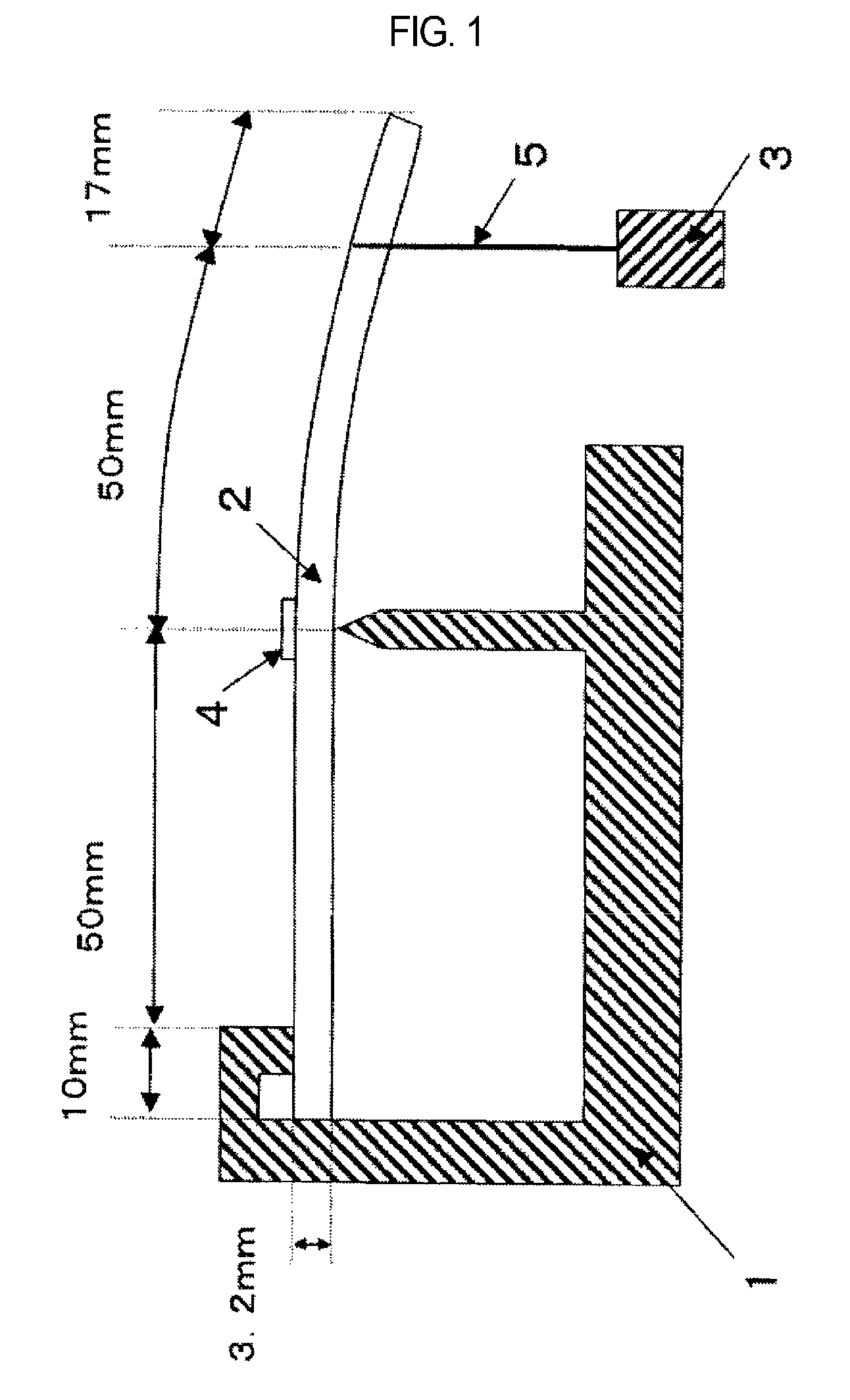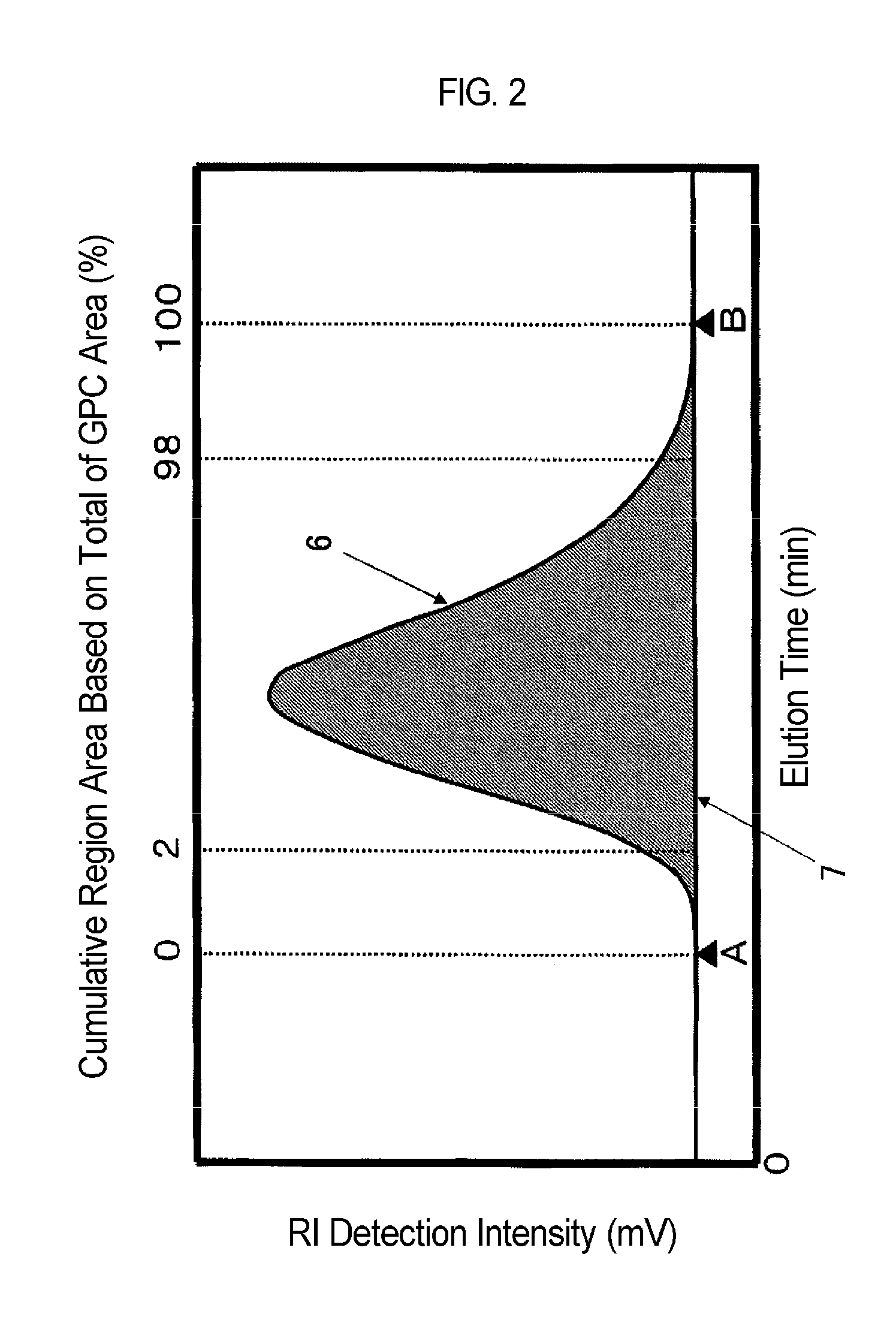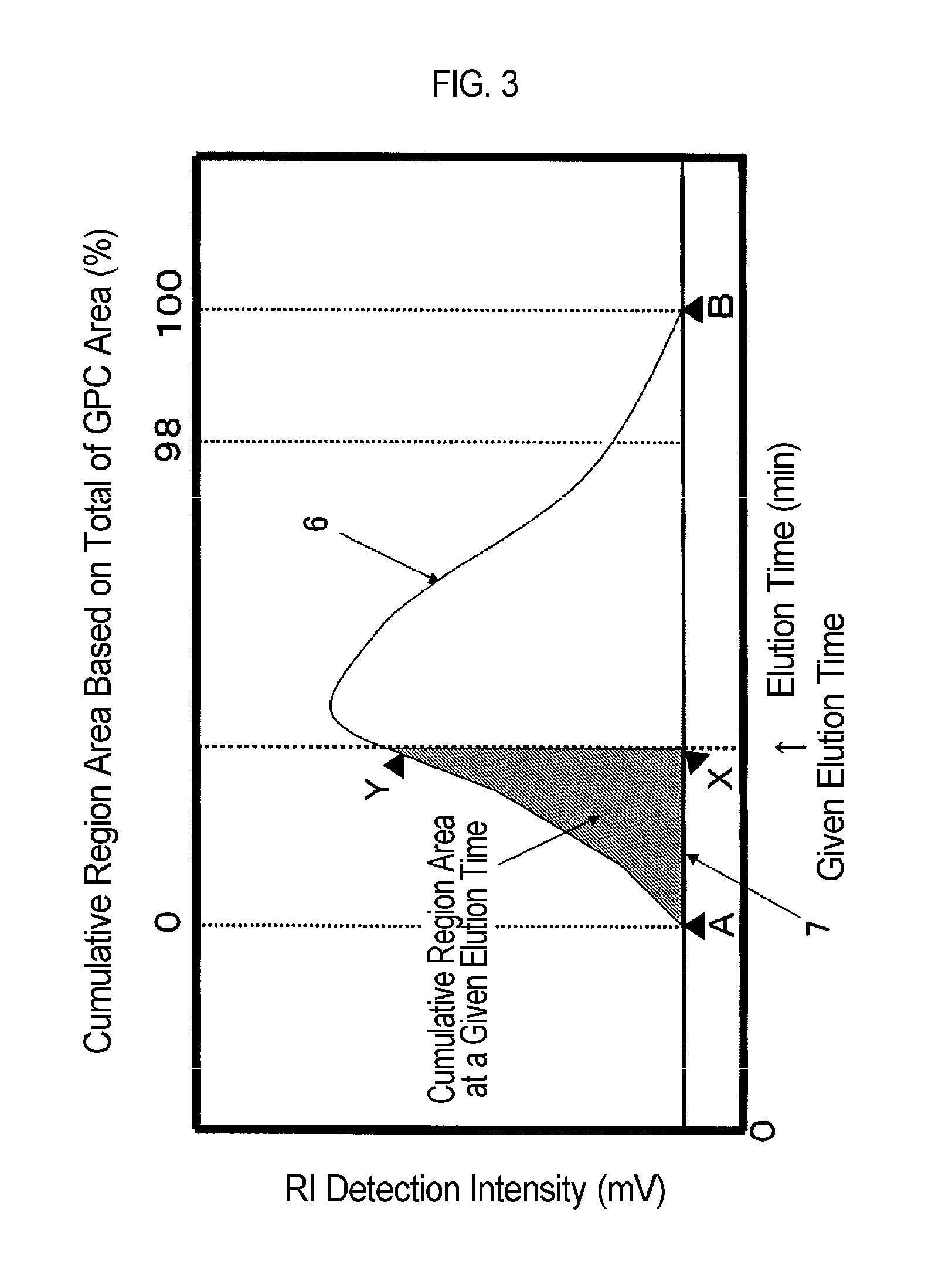Methacrylic resin, molded article thereof, and method for producing methacrylic resin
a technology of methacrylic resin and molded articles, which is applied in the directions of transportation and packaging, natural mineral layered products, and cellulosic plastic layered products, etc., can solve the problems of increasing distortion of molded articles and impossible molding, and achieves excellent colorless transparency, high impact resistance, and high fluidity.
- Summary
- Abstract
- Description
- Claims
- Application Information
AI Technical Summary
Benefits of technology
Problems solved by technology
Method used
Image
Examples
example 1
[0270]Two (2) kg of water, 65 g of calcium phosphate, 39 g of calcium carbonate, and 0.39 g of sodium lauryl sulfate were charged into a vessel having a stirring device provided with four inclined paddle impellers to obtain a mixed solution (A).
[0271]Next, 26 kg of water was charged into a 60 L reactor, the temperature was increased to 80° C., and then the mixed solution (A) and the raw materials of polymer (I) in the blending amounts shown in the following Table 1 were charged therein.
[0272]Then, suspension polymerization was carried out by maintaining the temperature at about 80° C., and the exothermic peak 80 minutes after adding the polymer (I) raw materials was observed.
[0273]Subsequently, the temperature was increased to 92° C. at a rate of 1° C. / min, and the 92° C. temperature was maintained for about 30 minutes.
[0274]Then, after the temperature was decreased to 80° C. at a rate of 1° C. / min, the raw materials of polymer (II) were charged into the reactor in the blending amou...
examples 2 to 17
[0284]Polymerization was carried out and polymer particles were obtained in the same manner as in Example 1, except that the raw materials shown in the following Table 1 were used.
[0285]Table 2 shows the time T1 from adding the raw materials of polymer (I) until the exothermic peak was observed, as well as the retention temperature and retention time since the exothermic peak was observed, and also the time T2 from adding the raw materials of polymer (II) until the exothermic peak was observed and the value for (T2) / (T1). Further, the following Table 3 shows the measurement results of the agglomerate amount, angle of repose, pellet weight average molecular weight, ratio of the molecular weight component 1 / 5 or less the (Mp), the above Mh and Ml, Mw / Mn, average particle size, content of the components having a particle size of less than 0.15 mm, moisture content, and yellowness index difference.
[0286]Resin pellets were obtained in the same manner as in Example 1. During this operatio...
PUM
| Property | Measurement | Unit |
|---|---|---|
| angle of repose | aaaaa | aaaaa |
| particle size | aaaaa | aaaaa |
| particle size | aaaaa | aaaaa |
Abstract
Description
Claims
Application Information
 Login to View More
Login to View More - R&D
- Intellectual Property
- Life Sciences
- Materials
- Tech Scout
- Unparalleled Data Quality
- Higher Quality Content
- 60% Fewer Hallucinations
Browse by: Latest US Patents, China's latest patents, Technical Efficacy Thesaurus, Application Domain, Technology Topic, Popular Technical Reports.
© 2025 PatSnap. All rights reserved.Legal|Privacy policy|Modern Slavery Act Transparency Statement|Sitemap|About US| Contact US: help@patsnap.com



